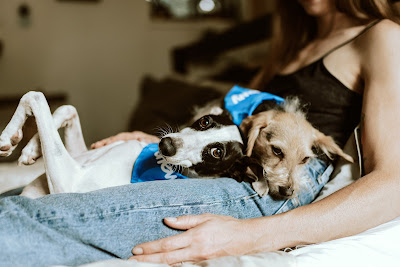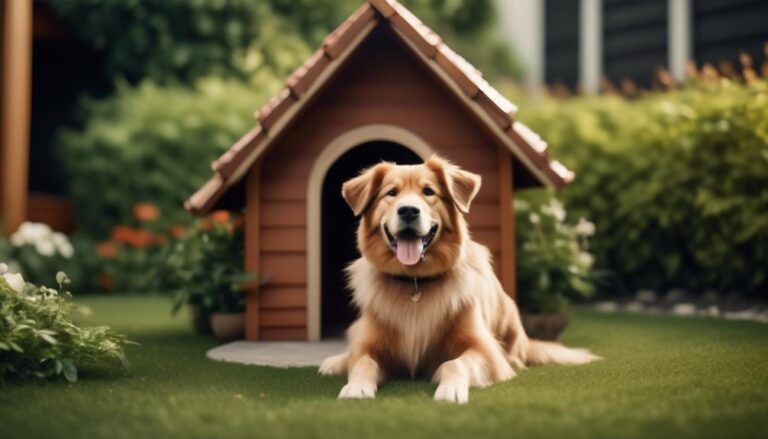What Your Dog’s Facial Expressions Are Really Trying to Tell You

What Your Dog’s Facial Expressions Are Really Trying to Tell You: Have you ever looked into your dog’s eyes and felt like they were trying to tell you something? Well, you’re not wrong. Dogs have a fascinating way of communicating with us through their facial expressions, using a combination of subtle movements and gestures. While it may seem like simple doggy expressions, these seemingly innocent looks can actually convey a wealth of information about your furry companion’s emotions and intentions.
From joy and sadness to anger and confusion, understanding your dog’s facial expressions can provide valuable insights into their inner world. So, the next time you catch a glimpse of that curious expression on your dog’s face, be prepared to uncover the hidden messages they are trying to convey.
The Power of Dog Facial Expressions
Discover the undeniable influence and captivating power of dog facial expressions. Canine facial expressions have evolved through domestication, allowing dogs to communicate with humans effectively. Domestication transformed their facial muscle anatomy, giving them unique eyebrow muscles not found in all wolves. Dogs frequently produce eyebrow movements, resembling human expressions of sadness. These facial expressions serve various purposes, including begging for food and showing affection. The expressive eyebrows of dogs can trigger a nurturing response in humans, making them irresistible. However, dog facial expressions are not solely for emotions; they also serve as a form of communication.
They are influenced by the presence of humans and their attention, highlighting the connection between dogs and humans. To understand a dog’s emotional state, it is crucial to interpret their facial expressions in the context of their body language. For example, a smiling dog may indicate happiness, fear, or aggression, but other signs like flat ears or growling can reveal the true meaning behind the smile. Dog facial expressions also serve as a nonverbal language to express aversive responses like pain.
Eye contact plays a vital role in the communication and connection between dogs and humans. Dogs are skilled at reading human communicative cues and use facial expressions to interact socially. Understanding and responding to a dog’s facial expressions can strengthen the bond between dogs and humans. So, pay attention to your dog’s expressions, as they hold a wealth of information about their emotional state and nonverbal communication.
Understanding Your Dog’s Happy Face
When trying to understand your dog’s happy face, there are a few key signs to look for. First, pay attention to their body language – a relaxed, open mouth and a gently wagging tail indicate contentment and joy. Additionally, observe their facial expression – soft, relaxed eyes and raised eyebrows can convey excitement and happiness. By recognizing these signs, you can better understand and connect with your furry friend.
Signs of Contentment
To understand your dog’s happy face, look for signs of contentment through their soft eye contact, pricked ears, relaxed mouth, tail-wagging, and overall posture. A dog with soft eye contact has round or almond-shaped eyes and dilated pupils, indicating a social and friendly demeanor.
When a dog’s ears are pricked hard forward, it shows arousal and alertness, but the context determines if it’s excited or aggressive. A relaxed mouth with closed or slightly open lips and wrinkle-free skin indicates a contented dog. Tail-wagging can convey different emotions depending on the height, speed, and stiffness of the wag. Lastly, a dog’s raised hackles and overall posture can indicate fear, stress, or playfulness. By understanding these body language cues, you can better interpret your dog’s emotional state.
Joyful Body Language
A joyful dog often exhibits soft eye contact, a relaxed mouth, and a wagging tail, indicating a calm and contented state. When a dog is happy, their eyes appear relaxed and their gaze is gentle. Their mouth is open, but not tense, and may even display a happy grin. The canine’s tail wags enthusiastically, showing their excitement and happiness.
Additionally, a joyful dog may have raised eyebrows, which can indicate surprise or astonishment, reminding us to engage with them. It’s important to pay attention to a dog’s overall body language, including the position of their ears. Ears that are relaxed and slightly forward suggest a happy and attentive state. Understanding your dog’s joyful body language will help you strengthen your bond and provide them with the care and love they deserve.
Relaxed Facial Muscles
Relaxed facial muscles in dogs are a clear indication of their happiness and contentment. When a dog’s facial muscles are relaxed, it means that they are at ease and comfortable in their environment. You can easily identify a relaxed facial expression by looking for a soft, open mouth and relaxed, half-closed eyes. Sometimes, a dog with relaxed facial muscles may even show a slight, contented smile. This happy face is often accompanied by a loose and wiggly body posture, further demonstrating their positive emotions. Understanding your dog’s relaxed facial muscles is crucial for strengthening your bond and communication with them. By paying attention to their facial expressions, you can ensure that your furry friend feels loved and understood.
Decoding Your Dog’s Sad Expressions
When it comes to decoding your dog’s sad expressions, understanding their body language and emotional cues is essential. Pay attention to droopy ears, a downward gaze, and a tense mouth, as these are common signs of sadness in dogs. Additionally, be aware of the ‘puppy dog eyes’ expression, which dogs may use to seek attention or express their sadness. By recognizing and responding to these signals, you can provide the comfort, attention, and reassurance that your dog may need.
Understanding Dog Body Language
Understanding your dog’s sad expressions is essential for effective communication and strengthening the bond between you and your furry companion. Dogs use a combination of facial expressions and body language to convey their emotions and needs. When a dog is sad, their facial expressions may include droopy eyes, flattened ears, and a downturned mouth. Pay attention to your dog’s ears, as they may be pressed back against their head when they are feeling sad.
Additionally, dogs may yawn as a way to communicate stress or discomfort. It’s important to consider the context and overall body language of your dog to accurately interpret their emotions. By understanding your dog’s body language and facial expressions, you can better meet their needs and enhance your relationship with them.
Emotional Cues in Dogs
To accurately decode your dog’s sad expressions, pay close attention to their facial cues and body language. Dogs use facial expressions not only to express emotions but also to communicate with humans. Understanding and responding to your dog’s facial expressions can strengthen the bond between you and your furry friend. However, it’s important to interpret their facial expressions in the context of their body language.
A dog’s sad expression, such as droopy eyes or a downturned mouth, may indicate that they are feeling down or unhappy. It’s crucial to be attentive to these emotional cues in dogs, as they rely on nonverbal communication to express their feelings. By understanding and responding to your dog’s sad expressions, you can provide the necessary support and ensure their emotional well-being.
What Your Dog’s Angry Face Is Saying
Your dog’s angry face can communicate a range of emotions through flattened ears, direct eye contact, and a tense mouth. When your dog is angry, their ears may flatten against their head, indicating aggression or fear. This is an important cue for dog owners to pay attention to. Additionally, direct eye contact is another sign of anger in dogs. If your dog is staring at you or another person with a hard, intense gaze, it may be a display of anger. You should be cautious and aware of this behavior, as it could potentially lead to aggression.
Another way your dog’s angry face can be expressed is through a tense mouth. When a dog is angry, their mouth may appear tight and their lips may be pulled back, showing their teeth. This tense mouth, combined with wrinkled skin around the mouth, is a clear indication of anger.
It’s crucial for dog owners to understand these facial expressions and body language cues in order to interpret their dog’s emotions accurately. This way, you can better assess the situation and respond appropriately. When a dog shows the whites of their eyes, growls, and exhibits a stiff, rigid body posture along with an angry face, it is essential to address the situation with caution and take appropriate measures to ensure everyone’s safety.
Surprising Meanings Behind Your Dog’s Confused Look
Have you ever wondered what your dog’s confused look really means? Understanding the hidden emotions behind confusion and decoding your dog’s puzzling facial cues can provide valuable insights into their state of mind. From raised eyebrows to head tilting, there are surprising meanings behind these expressions that can help you better understand and communicate with your furry friend.
Hidden Emotions Behind Confusion
When your dog looks confused, their facial expression may actually be hiding a range of surprising emotions. Dogs use their facial expressions to communicate their emotional states and intentions. A confused look in a dog can indicate surprise, astonishment, or uncertainty. It is important to understand a dog’s body language in order to accurately interpret their facial expressions.
Pay attention to subtle cues such as eyebrow raising, head tilting, and flattening of the ears, as they can provide important information about a dog’s emotions and state of mind. Furthermore, a dog’s facial expressions can convey more than just emotions; they can serve as a nonverbal language to express aversive responses like pain. By observing and understanding your dog’s facial expressions, you can better communicate and respond to their needs.
Decoding Puzzling Facial Cues
As we continue our exploration of dog facial expressions, let’s now uncover the surprising meanings behind your dog’s confused look. Dogs, like humans, use their facial expressions to communicate their internal state and emotions. Understanding these cues is crucial for deciphering canine communication and building a deeper connection with your furry friend. When your dog appears confused, pay attention to their body language as well. Confusion may be accompanied by a furrowed brow, tilted head, or raised ears. These facial cues indicate that your dog is trying to understand something or seeking clarification. By decoding these facial cues and considering the context, you can better understand your dog’s confusion and respond appropriately to help them navigate their environment.
The Subtle Messages of Your Dog’s Raised Eyebrows
Your dog’s raised eyebrows can reveal subtle messages of surprise, astonishment, or uncertainty in various situations. Facial expressions play a crucial role in canine communication, and the position of their eyebrows can provide valuable insights into their emotional state. When you notice your dog’s eyebrows raised, it’s a good time to engage with them as they may be more attentive and ready to learn.
Raised eyebrows can also signify that your dog is living in the moment and open to interaction. It’s a sign that they are actively processing information and are interested in their surroundings. This heightened state of awareness can create opportunities for bonding and strengthening your relationship with your furry friend.
However, it’s important to consider the context and your dog’s overall body language when interpreting the meaning behind raised eyebrows. Each dog is unique, and their facial expressions can vary depending on their breed, personality, and past experiences. Paying attention to their other signals, such as ear position, tail wagging, and vocalizations, can help you accurately understand their intentions and emotions.
Understanding your dog’s raised eyebrows can significantly improve communication between the two of you. It allows you to respond appropriately to their needs and provide the necessary support in situations where they may feel surprised, astonished, or uncertain. By being attuned to their subtle messages, you can create a safe and comfortable environment for your dog, fostering trust and a deeper connection.
Uncovering the Secrets of Your Dog’s Playful Grin
To understand the meaning behind your dog’s raised eyebrows, it’s important to also uncover the secrets of their playful grin. Dog facial expressions serve as a nonverbal language, allowing them to express emotions and communicate social signals. When your dog grins playfully, it is often a sign of joy and happiness. This expression is accompanied by a relaxed body posture and wagging tail, indicating a positive interaction and a desire to engage with you.
Dogs use their playful grin to initiate social interaction and strengthen their relationships with humans. It is their way of inviting you to play and have fun together. When your dog grins at you, it shows their trust and comfort in your presence. They see you as a source of companionship and enjoyment.
However, it’s important to note that not all grins are friendly. Sometimes, a dog’s grin can be a sign of fear or aggression. In these cases, the grin may appear stiff or tense, with lips pulled back and teeth exposed. It’s crucial to consider the context and other body language cues to accurately interpret your dog’s facial expressions.
Understanding and responding to your dog’s playful grin can strengthen the bond between you and your pet. When you reciprocate their playfulness and engage in activities that they enjoy, it reinforces positive associations and builds trust. Take the time to observe and learn your dog’s unique facial expressions, as this will enhance your ability to communicate and connect with them on a deeper level.
How Your Dog’s Eyes Reveal Their Emotions
Your dog’s eyes are a window into their emotions, revealing a wealth of information about how they are feeling. Just like humans, dogs use their eyes to communicate their emotions through facial expressions and body language. By understanding the different cues that can be observed in a dog’s eyes, you can gain a deeper insight into their emotional state.
Soft eye contact is a positive sign and indicates a social and friendly dog. These dogs have round or almond-shaped eyes with dilated pupils. When your dog makes soft eye contact with you, it is a sign of trust and affection.
On the other hand, hard eye contact should be interpreted as a warning sign. This is when a dog maintains a hard, direct stare that is not friendly and is often accompanied by assertive body language. It is important to be cautious when encountering a dog with this type of eye contact.
Squinty eyes can also reveal a dog’s emotions. Depending on the dog’s body posture, squinty eyes can indicate either appeasement or fear. When a dog squints their eyes while keeping their body relaxed, it is a sign of appeasement or submissiveness. However, if a dog squints their eyes while displaying tense body language, it may indicate fear or discomfort.
Avoiding eye contact is another way dogs communicate their emotions. Dogs may look away to show deference and non-confrontation. It is important to respect their boundaries and give them space when they choose to avoid eye contact.
Lastly, the “whale eye” is when a dog shows the whites of their eyes. This is often seen in dogs that are resource-guarding or feeling threatened. It is a clear sign that the dog is uncomfortable and may become aggressive if their space or possessions are approached.
The Language of Your Dog’s Ears
Understanding the language of your dog’s ears can provide valuable insight into their emotions and current state of mind. Just like their eyes, dogs use their ears to communicate their feelings and intentions. By paying attention to their ear positions, you can better understand what your furry friend is trying to tell you.
When a dog’s ears are pricked hard forward, it usually indicates arousal and alertness. However, it’s important to consider the context to determine if the dog is excited or aggressive. On the other hand, relaxed ears can vary depending on the type of dog. Prick-eared dogs have their ears up and forward, but not hard forward. Drop-eared dogs, on the other hand, have their ears hanging flat against the side of their face.
If your dog’s ears are pulled back, it can indicate happy appeasement, fear, or stress. To accurately interpret this expression, you need to observe the rest of their body language. Similarly, flattening the ears is a common expression that can convey fear or aggression. It is crucial to look for other signs to determine your dog’s true mood.
Another interesting ear behavior is head bowing. When a dog lowers their head and looks up in a non-threatening pose, it indicates uncertainty or submission. This gesture is often accompanied by relaxed ears and a relaxed body.
Putting It All Together: Reading Your Dog’s Facial Expressions
By observing your dog’s facial expressions, you can gain valuable insight into their emotions and current state of mind. Dogs have a wide range of facial expressions that serve a communicative function. Just like humans, dogs use their facial muscles to convey different emotions. For example, a relaxed and open mouth with a slightly raised eyebrow indicates a friendly and calm state of mind. On the other hand, a wrinkled forehead, narrowed eyes, and bared teeth can signify aggression or fear.
However, it is essential to consider a dog’s facial expressions in the context of their body posture and overall behavior. Dogs communicate not only through their faces but also through their entire body. Pay attention to their ears, tail, and overall body tension to get a better understanding of their emotional state.
When reading your dog’s facial expressions, it is important to remember that they can convey a wide range of emotions. Dogs can show happiness, fear, excitement, and even sadness through their faces. Additionally, dogs rely on eye contact to establish connections and understanding with humans. Maintaining eye contact with your dog can help strengthen your bond and deepen your understanding of their emotions.
To ensure your dog remains happy and content, it is crucial to provide them with a supportive and loving environment. Positive reinforcement, such as rewards and treats, can help strengthen the bond between you and your furry friend. By paying attention to your dog’s facial expressions, body language, and overall behavior, you can create a stronger connection and provide the care and attention they need.
What Your Dog’s Facial Expressions Are Really Trying to Tell You Frequently Asked Questions
Do Dog Facial Expressions Mean Anything?
Dog facial expressions do have meaning. Understanding canine emotions and decoding their facial cues allows you to uncover hidden messages. Dogs can fake expressions, but observing their eyes, ears, and mouth can help strengthen your bond.
What Your Dog Is Trying to Tell You?
Your dog’s facial expressions are a form of communication. Understanding their body language and interpreting their facial cues can help you decipher their messages and strengthen your bond. Dog body language decoded.
What Does It Mean When Your Dog Faces You?
When your dog faces you, it means they want your attention and connection. It’s a way for them to communicate their emotions and seek comfort or play. Pay attention to their facial expressions to understand their needs and feelings.
What Faces Do Dogs Make When They’re Happy?
When dogs are happy, their facial expressions can be decoded through their joyful body language. They may have relaxed eyes, a lolling tongue, and a relaxed, open mouth. Pay attention to their wagging tails and playful behaviors too.
Conclusion
Understanding your dog’s facial expressions is crucial for building a strong bond and effective communication with your furry friend. Dogs have a unique muscle that allows them to raise their inner eyebrow, mimicking human expressions of sadness. These facial expressions not only convey emotions but also serve as a way for dogs to interact socially with humans. By interpreting your dog’s happy, sad, angry, confused, and playful expressions, as well as their eyes and ears, you can gain valuable insight into their emotions and strengthen your relationship.








